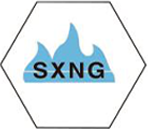
Aug . 12, 2024 15:36
Back to list
Understanding Pressure Reducing Valves for Efficient Fluid Control in Industrial Applications
Understanding Pressure Relief Valves Purpose, Function, and Importance
Pressure relief valves (PRVs) play a crucial role in various industrial applications, ensuring safety and efficiency in operations. This article delves into the importance of pressure relief valves, their working mechanisms, and their applications across different sectors.
What is a Pressure Relief Valve?
A pressure relief valve is a device designed to control or limit the pressure in a system. It automatically releases or diverts excess pressure to prevent potential damage to other components, ensuring safe and reliable operation. PRVs are essential in systems where the risk of overpressure is prevalent, such as in boilers, pipelines, and pressure vessels.
How Do Pressure Relief Valves Work?
The primary function of a PRV is to maintain a set pressure within a system. When the system pressure exceeds the predetermined limit, the valve opens, allowing fluid (liquid or gas) to escape. This action alleviates pressure and prevents the risk of rupture or explosion. Once the pressure drops back to a safe level, the valve closes, sealing the system once more.
Most pressure relief valves operate on a spring-loaded mechanism. The spring is calibrated to a specific pressure level. When pressure builds up, it pushes against the valve disc, overcoming the spring force and allowing the release of fluid. The proper adjustment of the spring tension is critical for the effective performance of the valve.
Types of Pressure Relief Valves
.
1. Spring-Loaded Valves The most common type, these valves use a spring mechanism to open and close based on pressure levels. 2. Pilot-Operated Valves These valves utilize a smaller pilot valve to control the opening and closing of the main valve, allowing for more precise control over larger systems. 3. Electronic Valves These high-tech PRVs integrate electrical components for automation and remote monitoring, suitable for modern industrial applications.
صمام تخفيض الضغط

Applications of Pressure Relief Valves
Pressure relief valves find applications across various industries
- Chemical and Petrochemical Industries In processes involving hazardous materials, PRVs are vital for preventing catastrophic failures caused by overpressure conditions.
- Oil and Gas In pipeline systems, PRVs protect equipment from surges that can occur during pipeline failures or equipment malfunctions.
- Power Generation In steam and gas turbine systems, PRVs help maintain optimal operating pressure, ensuring efficiency and safety.
- Water and Wastewater Management PRVs are used in water treatment facilities to protect pumps and tanks from overpressurization.
Importance of Regular Maintenance
Regular maintenance and inspection of pressure relief valves are paramount to their effective functioning. Faulty or improperly calibrated valves can lead to serious operational hazards or equipment damage. Routine testing, along with a strict adherence to industry standards and guidelines, ensures reliability and safety.
Conclusion
Pressure relief valves are integral components in safeguarding industrial operations from the dangers of excessive pressure. By preventing potential failures, they not only protect machinery and facilities but also ensure the safety of personnel. Understanding their operation, maintenance, and applications is vital for anyone involved in industries where pressurized systems are utilized. Investing in quality PRVs and implementing regular maintenance practices are essential steps towards safe and efficient industrial processes.
Latest news
-
Safety Valve Spring-Loaded Design Overpressure ProtectionNewsJul.25,2025
-
Precision Voltage Regulator AC5 Accuracy Grade PerformanceNewsJul.25,2025
-
Natural Gas Pressure Regulating Skid Industrial Pipeline ApplicationsNewsJul.25,2025
-
Natural Gas Filter Stainless Steel Mesh Element DesignNewsJul.25,2025
-
Gas Pressure Regulator Valve Direct-Acting Spring-Loaded DesignNewsJul.25,2025
-
Decompression Equipment Multi-Stage Heat Exchange System DesignNewsJul.25,2025

